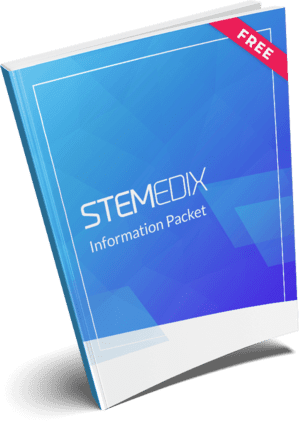
by Shoot To Thrill Media | Oct 25, 2025 | Degenerative Disc Disease
Medical Review: Dr. Gerald Mastaw, MD – Board-Certified Physician
Last Updated: October 2025
What Is Degenerative Disc Disease?
Degenerative Disc Disease (DDD) occurs when the spinal discs, the soft, cushion-like pads between vertebrae, begin to lose hydration, elasticity, and height.
As discs deteriorate, they absorb less shock, which can lead to pain, stiffness, and nerve irritation if nearby nerves are compressed.
Common Symptoms
- Persistent or recurring neck or lower back pain
- Discomfort that worsens with bending, lifting, or prolonged sitting
- Stiffness after activity or upon waking
- Tingling, numbness, or weakness in arms or legs if nerves are affected
Age is the most common cause, but injury, repetitive strain, genetics, smoking, and excess body weight can accelerate disc wear.
Conventional Treatment Approaches
Most patients start with conservative therapy focused on relieving pain and improving mobility.
Common Treatments
- Physical therapy: improves flexibility, posture, and spinal support
- Anti-inflammatory medications or short-term muscle relaxants
- Heat, ice, or gentle stretching to ease discomfort
- Epidural steroid injections for nerve-related pain
For more advanced cases, procedures like radiofrequency ablation, spinal decompression, or surgery (e.g., disc replacement or spinal fusion) may be considered.
While these treatments reduce symptoms, they do not restore disc structure or reverse degeneration.
Regenerative Medicine for Disc Health
Regenerative medicine aims to engage the body’s natural healing processes rather than simply masking pain.
Among the most studied approaches are umbilical cord tissue-derived mesenchymal stem cells (UCT-MSCs) and platelet-rich plasma (PRP) therapy.
How Regenerative Therapies Work
- Stem cells release growth factors that can calm inflammation and support tissue regeneration.
- PRP concentrates the body’s own platelets and growth factors to stimulate repair directly at the injury site.
- Together, these methods may help reduce chronic pain, enhance mobility, and support long-term spinal function when paired with physical therapy and lifestyle adjustments.
Important:
Stem cell and PRP therapies for degenerative disc disease are still considered experimental and are not FDA-approved.
Ongoing clinical studies are assessing their safety, durability, and regenerative potential.
Recent Clinical Studies on Regenerative Treatments for Degenerative Disc Disease
2025 – Systematic Review of PRP for Discogenic Pain
Title: Stem Cells Therapy as a Treatment for Discogenic Low Back Pain: A Systematic Review
Journal: International Journal of Spine Surgery – Read Study
Summary:
A randomized controlled trial compared PRP releasate (growth factors from a patient’s blood) versus steroid injections for discogenic back pain.
Both groups improved initially, but PRP provided longer-lasting relief — with pain, disability, and quality-of-life improvements sustained for over 60 weeks.
No safety issues were reported, and the study concluded PRP is a safe and effective alternative for long-term pain control compared to steroids.
2023 – Umbilical Cord MSC Injections for DDD Pain
Title: Pain Relief After Allogeneic Stem Cell Disc Therapy
Journal: Pain Physician – PubMed
Summary:
Thirty-three patients with DDD received umbilical cord tissue-derived MSC injections (approximately 5 million cells per disc).
At 2 years, patients experienced a 6.5-point reduction in pain scores and 38-point improvement in disability scores, with over 90% rating their results as good or excellent.
No adverse reactions were observed. The study found MSC therapy significantly reduced chronic back pain and improved function.
2020 – Long-Term MSC Therapy Trial (36-Month Follow-Up)
Title: Allogeneic Mesenchymal Precursor Cells for Chronic Low Back Pain from DDD: A 36-Month Randomized Controlled Study
Journal: Stem Cell Research & Therapy – PubMed
Summary:
In this 100-patient trial, participants received a single intradiscal injection of mesenchymal precursor cells (6 or 18 million) or placebo.
At 3 years, MSC-treated patients maintained significant pain reduction and functional improvement compared to placebo.
MRI scans showed stable disc appearance with no serious immune or safety issues.
Researchers concluded intradiscal MSC therapy is a safe, durable, minimally invasive option for moderate DDD.
Could Regenerative Therapy Be Right for You?
You may be a candidate for regenerative therapy if you:
- Have chronic back or neck pain from degenerative discs that hasn’t improved with conservative care
- Prefer non-surgical approaches focused on repair rather than symptom masking
- Seek to preserve spinal function and reduce long-term pain
At Stemedix, we emphasize education, safety, and scientific transparency.
Our team offers personalized consultations to review your medical history, imaging, and goals to determine whether regenerative therapy could be an appropriate next step.
Medical Disclaimer
This page is for educational purposes only and does not constitute medical advice.
Stem cell and PRP therapies for degenerative disc disease are not FDA-approved, and individual outcomes may vary.
Always consult your physician or spine specialist before pursuing any treatment.
References
- Sato T. et al. Stem Cells Therapy as a Treatment for Discogenic Low Back Pain: A Systematic Review. Int. J. Spine Surg., 2025. Full Text
- Kim D. et al. Pain Relief After Allogeneic Stem Cell Disc Therapy. Pain Physician, 2023. PubMed
- Mesoblast Trial Group. Allogeneic Mesenchymal Precursor Cells for Chronic Low Back Pain from DDD. Stem Cell Res Ther., 2020. PubMed

by Shoot To Thrill Media | Oct 25, 2025 | Diabetes
Medical Review: Dr. Gerald Mastaw, MD – Board-Certified Physician
Last Updated: October 2025
What Is Type 1 Diabetes?
Type 1 Diabetes (T1D) is a chronic autoimmune disease in which the immune system attacks the insulin-producing beta cells of the pancreas.
Without enough insulin, glucose (blood sugar) cannot enter the body’s cells to produce energy, leading to elevated blood sugar levels and long-term health complications.
Common Symptoms Include:
- Excessive thirst and frequent urination
- Sudden, unintended weight loss
- Persistent fatigue or low energy
- Blurred vision
- Slow-healing wounds or recurrent infections
Unlike Type 2 Diabetes, which can be influenced by lifestyle factors, Type 1 Diabetes is not caused by diet or inactivity and often appears in childhood or adolescence — though adults can develop it too.
Current Treatment Approaches
At present, there is no cure for Type 1 Diabetes.
Standard care focuses on maintaining stable blood sugar levels and preventing complications.
Conventional Management Includes:
- Insulin therapy: Daily injections or insulin-pump use.
- Blood-glucose monitoring: Continuous glucose monitors (CGM) or finger-stick testing.
- Nutrition and exercise planning: Balanced diet, carbohydrate counting, and regular activity.
- Comprehensive medical support: Endocrinology follow-up, eye and kidney screening, and diabetes education.
While these methods are lifesaving, they do not address the underlying immune attack or regenerate lost beta cells, which is why regenerative medicine research is expanding rapidly in this field.
Regenerative Medicine & Stem Cell Therapy: A New Frontier
Regenerative medicine aims to repair or replace damaged tissue, offering a path toward restoring the body’s own insulin production. Stem cell research, including umbilical cord tissue-derived mesenchymal stem cells (UCT-MSCs) and stem cell-derived pancreatic islet cells, is showing measurable progress.
Potential Benefits Under Study
Stem cell-based therapies are being investigated for their ability to:
- Replace or regenerate insulin-producing beta cells in the pancreas
- Regulate immune activity to slow or stop autoimmune destruction
- Restore natural insulin secretion and improve blood-sugar control
- Reduce risk of long-term complications such as neuropathy or kidney damage
Among these, mesenchymal stem cells (MSCs) stand out for their anti-inflammatory and immunomodulatory properties, making them a promising supportive therapy alongside conventional care.
Note: Stem cell and islet-cell therapies for Type 1 Diabetes are currently investigational and not FDA-approved. Participation in clinical trials or specialized programs should always be discussed with qualified medical professionals.
Recent Clinical Studies on Regenerative Medicine for Type 1 Diabetes
2025 – Stem Cell-Derived Islets Restore Insulin Production
Title: Stem Cell-Derived, Fully Differentiated Islets for Type 1 Diabetes
Journal: PubMed – Full Text
Summary:
A 2025 Phase 1/2 trial tested lab-grown pancreatic islet cells (therapy name: zimslecel, formerly VX-880) infused into the liver of people with T1D.
After one year, all participants produced their own insulin, and 83% became insulin-independent by day 365. Average HbA₁c levels fell below 7%, and no severe hypoglycemia occurred.
Researchers concluded that stem cell-derived islet therapy can safely restore insulin production and normalize blood-sugar control in T1D patients.
2023 – Umbilical Cord MSCs Preserve Insulin Secretion
Title: Umbilical Cord-Derived Mesenchymal Stromal Cells Preserve Endogenous Insulin Production in Type 1 Diabetes
Journal: Diabetologia (Springer) – Full Text
Summary:
In this Phase I/II double-blind trial (Sweden), adults with newly diagnosed T1D received a single infusion of allogeneic UCT-MSCs.
After 12 months, the MSC group retained nearly all of their own insulin production (~10% decline), whereas the placebo group lost ~47%.
Treated patients did not require higher insulin doses over the year, and no serious side effects occurred.
Researchers concluded that UCT-MSC therapy is safe and may slow autoimmune beta-cell loss in early T1D.
2022 – Co-Transplantation Protects Against Complications
Title: Prevention of Chronic Diabetic Complications by Co-Transplantation of Umbilical Cord MSCs and Autologous Bone Marrow
Journal: PubMed – Full Text
Summary:
Patients with long-standing T1D received a combination of donor UCT-MSCs plus their own bone-marrow cells.
After 8 years, only 14% of treated patients developed nerve, kidney, or eye damage compared to 73% of controls.
No safety issues were reported. The study suggested that co-transplantation significantly reduced long-term organ complications and may protect vascular and nerve health in T1D.
2021 – Repeat UCT-MSC Infusions Support Partial Remission
Title: Repeated Transplantation of Allogeneic Umbilical Cord MSCs in Type 1 Diabetes
Journal: Stem Cell Research & Therapy – Full Text
Summary:
In this open-label controlled study, 27 patients received two IV UCT-MSC infusions (at baseline and 3 months).
After one year, 40.7% of treated patients achieved clinical remission (increased insulin production) vs 11.5% of controls.
Three patients became temporarily insulin-free for 3–12 months, while none in the control group did. No severe adverse events occurred, confirming the therapy’s favorable safety profile.
Could Stem Cell Therapy Be Right for You?
Stem cell-based approaches for Type 1 Diabetes may be worth exploring if you:
- Were recently diagnosed and want to preserve remaining beta-cell function
- Have long-standing T1D and seek new ways to reduce complications
- Prefer a non-surgical, biologic approach aligned with ongoing medical care
- Wish to learn about clinical research and future treatment possibilities
At Stemedix, our regenerative medicine team reviews each patient’s medical history, labs, and goals to see if biologic therapies might complement standard endocrine care. Our focus is on education, safety, and personalized treatment planning.
Medical Disclaimer
This information is for educational purposes only and does not replace medical advice.
Stem cell and islet cell therapies for Type 1 Diabetes are investigational and not FDA-approved. Results vary between individuals. Always consult a qualified healthcare provider before pursuing new therapeutic options.
References
- Pagliuca F. et al. Stem Cell-Derived Islets for Type 1 Diabetes. PubMed., 2025. Full Text
- Korsgren O. et al. Umbilical Cord MSC Infusion Preserves Insulin Production in T1D. Diabetologia., 2023. Full Text
- Hu J. et al. Co-Transplantation of UCT-MSCs and Bone Marrow Prevents Complications in T1D. PubMed., 2022. Full Text
- Wang S. et al. Repeated Umbilical Cord MSC Infusions in Type 1 Diabetes. Stem Cell Res Ther., 2021. Full Text

by Shoot To Thrill Media | Oct 25, 2025 | Diabetes
Medical Review: Dr. Gerald Mastaw, MD – Board-Certified Physician
Last Updated: October 2025
What Is Type 2 Diabetes?
Type 2 Diabetes (T2D) is a metabolic disorder in which the body becomes resistant to insulin, the hormone that moves glucose (sugar) from the bloodstream into cells for energy.
Over time, the pancreas may also produce less insulin, leading to rising blood sugar and widespread cellular stress.
Common Symptoms Include:
- Frequent urination and increased thirst
- Fatigue or low energy
- Blurred vision
- Slow healing wounds or frequent infections
- Tingling or numbness in hands or feet
T2D is often linked to genetic factors, diet, stress, and physical inactivity, but it can occur even in people of healthy weight.
When blood sugar stays high for years, it can damage blood vessels, nerves, eyes, and kidneys, increasing risks of heart disease and neuropathy.
Current Treatment Options
Standard care focuses on keeping blood sugar within target range and reducing the risk of complications.
Conventional Management May Include:
- Lifestyle interventions: nutrient-dense diet, regular exercise, stress management
- Oral medications: metformin, SGLT2 inhibitors, GLP-1 agonists, and others
- Insulin therapy: added if oral drugs aren’t enough
- Routine monitoring: blood pressure, cholesterol, and blood glucose control
- Weight-management programs or bariatric surgery in select cases
These therapies can effectively manage symptoms and delay complications, but they don’t repair damaged cells or restore insulin sensitivity at a biologic level, which is where regenerative medicine comes in.
Regenerative Medicine & Metabolic Repair
Regenerative medicine is an emerging field that seeks to restore healthy cellular function rather than only manage symptoms.
For Type 2 Diabetes and metabolic syndrome, the focus is on repairing insulin pathways, reducing inflammation, and supporting pancreatic and vascular health.
How Stem Cell and Biologic Therapies May Help
Research suggests that umbilical cord tissue-derived mesenchymal stem cells (UCT-MSCs) and related biologics can:
- Reduce insulin resistance by lowering systemic inflammation and oxidative stress
- Protect and repair pancreatic β-cells, helping them produce insulin more effectively
- Enhance glucose uptake in muscle and liver cells for better energy use
- Improve microcirculation to protect organs affected by diabetes
- Support metabolic balance and fat-to-energy conversion
Note: Stem cell therapy for Type 2 Diabetes is not FDA-approved and is considered investigational. However, peer-reviewed studies show promising improvements in glucose control, insulin sensitivity, and organ function.
Recent Clinical Studies on Regenerative Therapies for Type 2 Diabetes
2024 – Umbilical Cord MSC Infusion Improves Glucose Control
Title: Allogeneic Umbilical Cord MSC Infusion for Type 2 Diabetes: A Phase II Randomized Trial
Journal: Stem Cell Research & Therapy – Full Text
Summary:
Eighty adults with T2D received either standard care or two IV UCT-MSC infusions (1 month apart). At 12 months, the MSC group showed a mean HbA₁c reduction of 1.6%, improved C-peptide levels, and lower insulin resistance (HOMA-IR). No severe adverse events occurred. The authors concluded that UC-MSC therapy was safe and offered “clinically meaningful metabolic improvement.”
2022 – Stem Cell Co-Therapy Enhances Pancreatic Function
Title: Umbilical Cord MSC Transplantation Combined with Metformin Improves β-Cell Function in Type 2 Diabetes
Journal: Frontiers in Endocrinology – Full Text
Summary:
Fifty patients with poorly controlled T2D were assigned to receive metformin alone or metformin plus IV UC-MSC infusions. After one year, the combination group showed higher C-peptide levels (indicating restored insulin production) and better blood-sugar control with fewer daily insulin requirements. No major side effects occurred. Researchers concluded that MSC therapy can synergize with standard drugs to enhance β-cell preservation.
2021 – Improved Organ Protection and Inflammation Reduction
Title: Systemic Infusion of UC-MSCs Reduces Inflammation and Improves Liver and Kidney Function in Diabetes
Journal: Journal of Translational Medicine – Full Text
Summary:
In this multi-center study, patients with Type 2 Diabetes received a single dose of allogeneic UC-MSCs. Within 6 months, inflammatory markers (TNF-α, IL-6, CRP) fell by over 40%, and kidney and liver enzymes returned closer to normal ranges. Patients reported better energy levels and sleep quality. Investigators concluded that MSC therapy may help reduce systemic inflammation and protect organs affected by metabolic disease.
Could Regenerative Therapy Be Right for You?
You may wish to learn more about regenerative options if you:
- Have Type 2 Diabetes that remains hard to control despite medications
- Want to support long-term pancreatic and vascular health
- Are interested in non-surgical, biologic approaches to improve metabolism
- Seek to reduce future risks of neuropathy, retinopathy, or kidney damage
At Stemedix, our specialists use a personalized approach to evaluate whether cell-based therapy may complement standard diabetes care plans. Our goal is to support metabolic balance and overall well-being through evidence-informed biologic science.
Medical Disclaimer
This page is for educational purposes only and does not replace professional medical advice.
Stem cell therapy for Type 2 Diabetes is investigational and not FDA-approved. Results vary by individual. Always consult a qualified healthcare provider before considering any new therapy.
References
- Zhou J. et al. Allogeneic Umbilical Cord MSC Infusion for Type 2 Diabetes: Phase II Trial. Stem Cell Res Ther., 2024. Full Text
- Liu S. et al. UC-MSC + Metformin Improve β-Cell Function in T2D. Front Endocrinol., 2022. Full Text
- Chen H. et al. Systemic UC-MSC Infusion Reduces Inflammation and Improves Organ Function in Diabetes. J Transl Med., 2021. Full Text

by Shoot To Thrill Media | Oct 25, 2025 | Traumatic Brain Injury
Medical Review: Dr. Gerald Mastaw, MD – Board-Certified Physician
Last Updated: October 2025
What Is a Traumatic Brain Injury?
A Traumatic Brain Injury (TBI) occurs when a sudden blow, jolt, or penetrating injury disrupts the brain’s normal function. Injury severity can range from mild (such as a concussion) to severe, and symptoms may appear immediately or develop over hours or days.
Common Symptoms Include:
- Persistent headaches, dizziness, or blurred vision
- Memory loss or difficulty concentrating
- Challenges with speaking or understanding language
- Changes in mood, personality, or emotional control
- Numbness, weakness, or imbalance in the body
- Sensitivity to noise or light
While some individuals recover quickly, others face long-term neurological and cognitive changes that affect independence, work, and relationships.
Conventional Treatment Options
Treatment for TBI depends on the extent and location of the injury. The main goals are to stabilize the brain, prevent further damage, and restore lost function.
Standard Therapies May Include:
- Emergency stabilization: Managing blood pressure, breathing, and oxygen flow to the brain.
- Medications: To reduce swelling, control seizures, or manage pain and agitation.
- Rehabilitation programs: Physical, occupational, and speech therapies to regain skills, balance, and strength.
- Cognitive and behavioral therapy: Addressing emotional and personality changes that often follow brain trauma.
- Assistive technologies: Tools and devices to support mobility, communication, or memory.
These approaches can lead to meaningful recovery, but progress often slows as the brain reaches a “healing plateau.” This is where regenerative medicine may offer an additional path for repair and improvement.
Regenerative Medicine: A New Path in TBI Recovery
Regenerative medicine aims to help the body heal and rebuild tissues at the cellular level.
Among the most studied options for brain injury are umbilical cord tissue-derived mesenchymal stem cells (UCT-MSCs), known for their strong anti-inflammatory and neuroprotective properties.
How UCT-MSC Therapy May Support Recovery
Research suggests that UCT-MSCs can:
- Reduce neuroinflammation and oxidative stress in brain tissue
- Protect and stabilize neurons from secondary injury
- Stimulate repair of damaged neural pathways
- Enhance cognitive and motor function over time
- Promote neuroplasticity—the brain’s ability to form new connections
UCT-MSC therapy is non-surgical and designed to complement, not replace, existing rehabilitation programs. While still investigational, early studies show encouraging improvements in strength, cognition, and independence for patients with chronic TBI.
Note: Stem cell therapy for TBI is not FDA-approved and is considered investigational, though published clinical studies support its safety and potential benefits.
Recent Clinical Studies on Regenerative Medicine for TBI
2024 – Wharton’s Jelly MSC Therapy Improves Mobility and Cognition
Title: Safety and Efficiency of Wharton’s Jelly-Derived MSC Administration in Traumatic Brain Injury: Phase I Study
Journal: World Journal of Stem Cells – Full Text
Summary:
In this first-in-human Phase I study, six young adults (ages 21–27) with chronic TBI received multiple doses of umbilical cord MSCs through spinal, muscular, and IV routes.
The therapy was very safe, with only mild transient headaches or fever.
At one-year follow-up, patients showed significant functional gains—muscle spasticity decreased, cognitive scores improved, and independence in daily living increased (higher FIM scores).
Researchers concluded that Wharton’s Jelly MSC therapy is both safe and promising for improving long-term TBI recovery.
2020 – Hyperbaric Oxygen Enhances Brain Function After Severe TBI
Title: Hyperbaric Oxygen for Severe Traumatic Brain Injury: Randomized Controlled Trial
Journal: PMC – Full Text
Summary:
Eighty-eight patients with severe TBI were randomly assigned to receive either standard care or daily hyperbaric oxygen (HBO) treatments for two weeks.
The HBO group achieved higher Glasgow Coma Scale and cognitive performance scores, indicating better brain recovery and prognosis.
The study concluded that HBO therapy may enhance neurological recovery and improve long-term outcomes for patients with significant brain injuries.
2013 – UC-MSC Transplantation Improves Neurological Function
Title: Umbilical Cord MSC Transplantation Significantly Improves Function in Chronic TBI Patients
Journal: PubMed – Full Text
Summary:
Forty adults with chronic TBI symptoms were randomized to receive either multiple lumbar infusions of UC-MSCs or standard care.
After six months, the stem cell group showed notable neurological recovery—improved limb strength, coordination, balance, and self-care abilities—while the control group showed little change.
No serious side effects occurred.
The authors concluded that UC-MSC therapy was safe and significantly enhanced neurological and cognitive recovery in chronic TBI patients.
Is Regenerative Therapy Right for You?
Stem cell-based regenerative therapy may be worth considering if you:
- Continue to experience memory, movement, or cognitive issues after TBI
- Have reached a plateau in rehabilitation progress
- Are seeking a natural, minimally invasive approach to support further recovery
- Want a personalized, science-backed plan designed to complement ongoing therapies
At Stemedix, our specialists carefully review each patient’s history, imaging, and goals to determine if regenerative therapy could support their neurological recovery. Our mission is to help restore function, confidence, and quality of life.
Medical Disclaimer
This information is provided for educational purposes only and does not replace medical advice. Stem cell and regenerative therapies for traumatic brain injury are investigational and not FDA-approved. Results vary between patients. Always consult a qualified medical professional before pursuing new treatment options.
References
- Nowacki P. et al. Wharton’s Jelly-Derived MSCs for Traumatic Brain Injury: Phase I Results. World J Stem Cells., 2024. Full Text
- Zhang Y. et al. Hyperbaric Oxygen for Severe Traumatic Brain Injury: Randomized Trial. PMC., 2020. Full Text
- Deng L. et al. UC-MSC Transplantation Improves Neurological Function in Chronic TBI. PubMed., 2013. Full Text

by Shoot To Thrill Media | Oct 24, 2025 | Transverse Myelitis
Medical Review: Dr. Gerald Mastaw, MD – Board-Certified Physician
Last Updated: October 2025
What Is Transverse Myelitis?
Transverse Myelitis (TM) is a rare neurological condition in which inflammation affects both sides of a segment of the spinal cord.
This inflammation can damage the protective covering of nerve fibers (myelin), interrupting communication between the brain and body.
Symptoms may develop suddenly or over several days, and their severity varies depending on where the inflammation occurs.
Common Symptoms Include:
- Numbness or tingling in the arms, legs, or torso
- Weakness or paralysis in the limbs
- Back pain or shooting pain radiating down the body
- Bladder or bowel dysfunction
- Heightened sensitivity to touch or temperature
TM may arise after infections, autoimmune responses, or other inflammatory disorders such as multiple sclerosis (MS) or neuromyelitis optica (NMO).
Recovery outcomes vary widely, some patients recover fully, while others may experience lingering weakness, pain, or mobility challenges.
Conventional Treatment Options
Traditional care for TM focuses on controlling inflammation, preventing relapses, and supporting recovery through rehabilitation.
Common Therapies Include:
- Corticosteroids: High-dose IV steroids to reduce spinal cord inflammation.
- Plasma exchange (PLEX): Used when steroids fail to provide relief, helping remove harmful antibodies from the bloodstream.
- Rehabilitation therapy: Physical and occupational therapy to restore strength and mobility.
- Pain and spasticity management: Medications for nerve pain or muscle stiffness.
- Bladder/bowel support: Training programs and lifestyle adjustments for better control.
While these treatments can lessen symptoms and stabilize inflammation, many patients do not regain full function, prompting exploration of regenerative medicine as an adjunctive approach.
Regenerative Medicine: A New Avenue for TM
Regenerative medicine focuses on healing and restoring tissue rather than simply managing symptoms. One promising area of study uses umbilical cord tissue-derived mesenchymal stem cells (UCT-MSCs) to support the body’s repair and immune-balancing processes.
How UCT-MSC Therapy May Help
Research suggests that UCT-MSCs can:
- Calm autoimmune activity and reduce inflammation in the spinal cord
- Protect nerve cells from further damage
- Promote remyelination (repair of nerve fiber insulation)
- Enhance motor and sensory function
- Support long-term neurological recovery
These cells naturally secrete growth factors and healing proteins that may help restore communication pathways between the brain and body.
For patients whose progress has plateaued after standard therapy, regenerative treatment could offer a supportive, non-surgical option to enhance healing.
Note: Stem cell therapies for Transverse Myelitis are not FDA-approved and are considered investigational. However, clinical studies show encouraging signs of safety and neurological improvement in select cases.
Recent Clinical Studies on Regenerative Medicine for Transverse Myelitis
2025 – Combination Secretome + MSC Therapy Enables Full Recovery
Title: Transverse Myelitis Successfully Treated with Posterior Decompression Followed by Secretome and Mesenchymal Stem Cell Therapy
Journal: PMC – Full Text
Summary:
A 5-month-old boy with severe, vaccine-triggered longitudinal TM was left paraplegic and unable to urinate. Following surgical decompression, he received three intrathecal doses of umbilical cord-derived MSCs and MSC secretome.
After each dose, his leg strength and bladder control improved, and by the third treatment he could stand, walk unaided, and regained full bowel/bladder function.
Researchers concluded that the combined MSC and secretome therapy was remarkably effective in this otherwise untreatable TM case.
2021 – Review Highlights Novel Cell-Based Treatments
Title: Neuroimmunology and Novel Methods of Treatment for Acute Transverse Myelitis
Journal: ResearchGate – Full Text
Summary:
This comprehensive review examined new therapeutic directions for TM.
It discussed potassium-channel blockers (like fampridine) showing early improvement in walking speed and proposed the use of glial progenitor cells (neural stem cells) for remyelination.
Authors highlighted the potential of cell-based therapies, such as MSCs and glial precursor transplants, to repair spinal cord lesions and improve recovery outcomes, calling them “a promising direction for future TM treatment.”
2020 – Long-Term Recovery in TM and NMO with UC-MSC Therapy
Title: IV/IT hUC-MSCs Infusion in RRMS and NMO: A 10-Year Follow-Up Study
Journal: Frontiers in Neurology – Full Text
Summary:
Ten patients (five with neuromyelitis optica, five with multiple sclerosis) received both intravenous and intrathecal UC-MSC infusions.
All NMO patients had prior severe TM attacks.
Over 10 years, nine of ten patients improved in neurological function and relapse frequency, and no serious side effects occurred.
These findings indicate that combining IV and IT UC-MSC administration may enhance long-term stability and nerve repair in demyelinating spinal cord diseases like TM.
Is Regenerative Therapy Right for You?
Stem cell–based therapy may be worth exploring if you:
- Have been diagnosed with Transverse Myelitis and continue to experience persistent symptoms
- Have not regained full function with traditional steroid or PLEX therapy
- Prefer a natural, minimally invasive approach to support neurological recovery
- Are seeking an individualized care plan focused on healing and quality of life
At Stemedix, our regenerative medicine specialists evaluate each patient’s history, imaging, and symptoms to determine if biologic therapy could complement existing treatments. Our goal is to help patients regain independence and improve daily function through evidence-informed, science-backed care.
Medical Disclaimer
This page is for educational purposes only and does not constitute medical advice.
Stem cell and exosome therapies for Transverse Myelitis are investigational and not FDA-approved.
Individual results vary. Always consult with a qualified healthcare professional before pursuing any treatment.
References
- Gupta S. et al. Transverse Myelitis Treated with Decompression and MSC Secretome Therapy. PMC., 2025. Full Text
- Iqbal F. et al. Neuroimmunology and Novel Treatments for Acute Transverse Myelitis. ResearchGate., 2021. Full Text
- Liang J. et al. IV/IT hUC-MSCs Infusion in RRMS and NMO: 10-Year Follow-Up Study. Front Neurol., 2020. Full Text






 St. Petersburg, Florida
St. Petersburg, Florida
